Yuke Fang
Identity-Aware CycleGAN for Face Photo-Sketch Synthesis and Recognition
Mar 30, 2021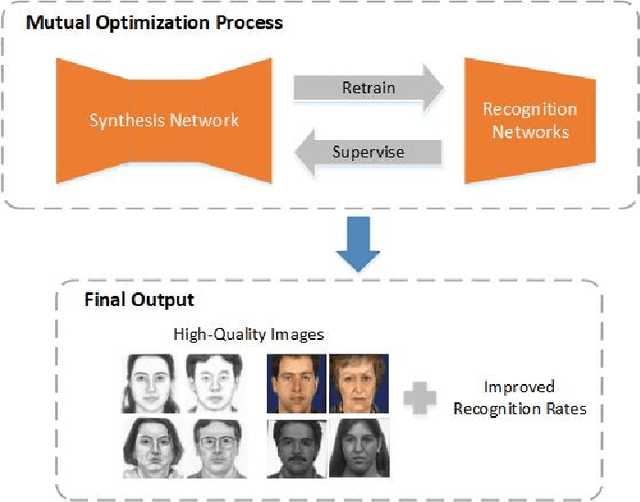
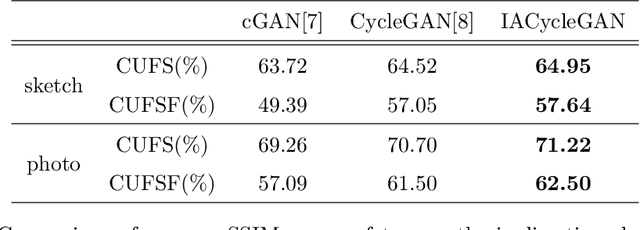
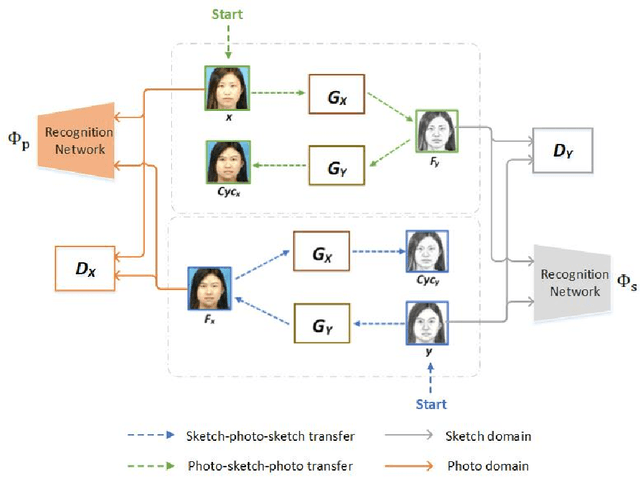

Abstract:Face photo-sketch synthesis and recognition has many applications in digital entertainment and law enforcement. Recently, generative adversarial networks (GANs) based methods have significantly improved the quality of image synthesis, but they have not explicitly considered the purpose of recognition. In this paper, we first propose an Identity-Aware CycleGAN (IACycleGAN) model that applies a new perceptual loss to supervise the image generation network. It improves CycleGAN on photo-sketch synthesis by paying more attention to the synthesis of key facial regions, such as eyes and nose, which are important for identity recognition. Furthermore, we develop a mutual optimization procedure between the synthesis model and the recognition model, which iteratively synthesizes better images by IACycleGAN and enhances the recognition model by the triplet loss of the generated and real samples. Extensive experiments are performed on both photo-tosketch and sketch-to-photo tasks using the widely used CUFS and CUFSF databases. The results show that the proposed method performs better than several state-of-the-art methods in terms of both synthetic image quality and photo-sketch recognition accuracy.
* 36 pages, 11 figures
Tool Breakage Detection using Deep Learning
Aug 16, 2018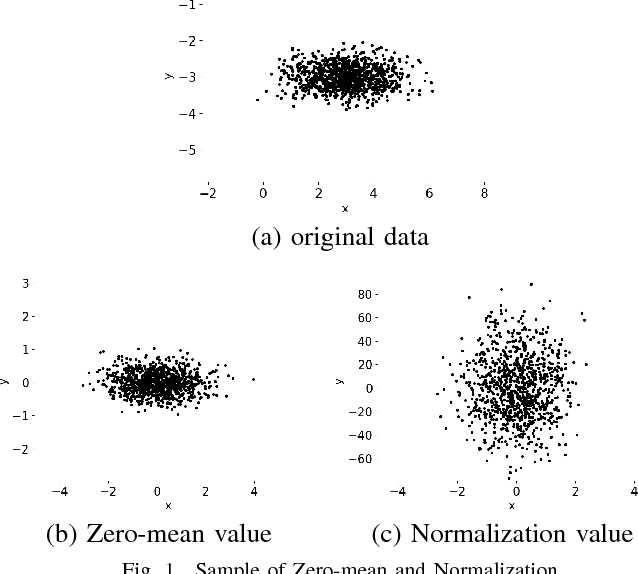
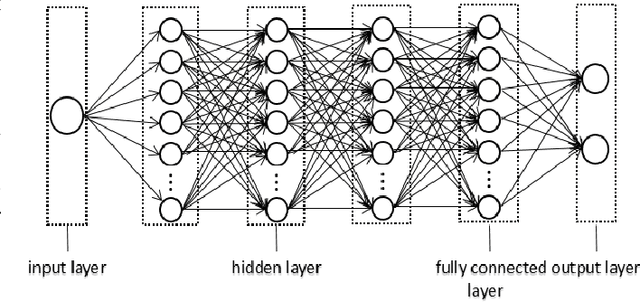
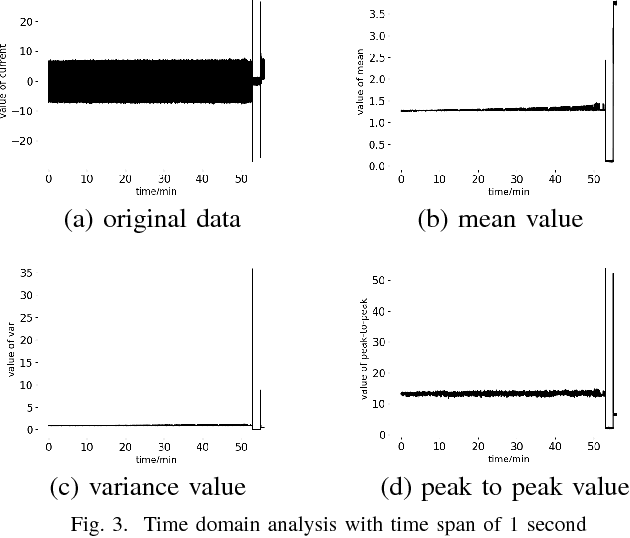
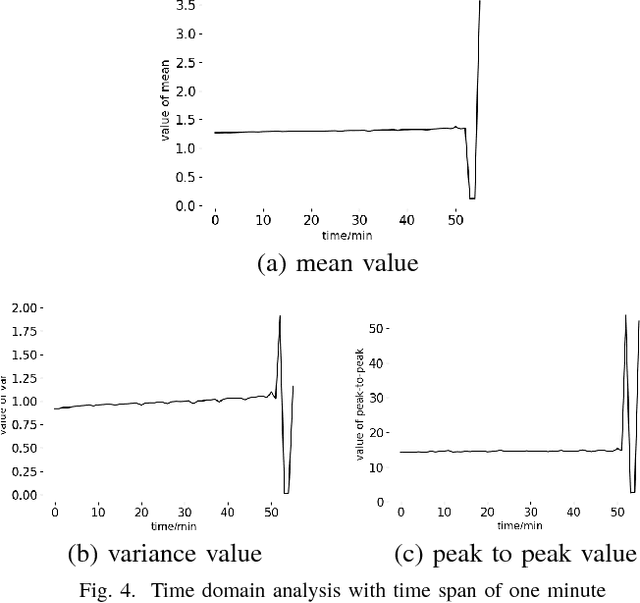
Abstract:In manufacture, steel and other metals are mainly cut and shaped during the fabrication process by computer numerical control (CNC) machines. To keep high productivity and efficiency of the fabrication process, engineers need to monitor the real-time process of CNC machines, and the lifetime management of machine tools. In a real manufacturing process, breakage of machine tools usually happens without any indication, this problem seriously affects the fabrication process for many years. Previous studies suggested many different approaches for monitoring and detecting the breakage of machine tools. However, there still exists a big gap between academic experiments and the complex real fabrication processes such as the high demands of real-time detections, the difficulty in data acquisition and transmission. In this work, we use the spindle current approach to detect the breakage of machine tools, which has the high performance of real-time monitoring, low cost, and easy to install. We analyze the features of the current of a milling machine spindle through tools wearing processes, and then we predict the status of tool breakage by a convolutional neural network(CNN). In addition, we use a BP neural network to understand the reliability of the CNN. The results show that our CNN approach can detect tool breakage with an accuracy of 93%, while the best performance of BP is 80%.
 Add to Chrome
Add to Chrome Add to Firefox
Add to Firefox Add to Edge
Add to Edge